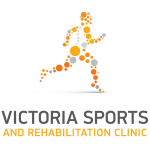Back pain is one of the most common conditions that we treat at the clinic and is the leading cause of disability worldwide. One of the most common misconceptions that we hear from patients is that the best thing is rest (commonly bed rest) and pain medication until the episode subsides.
Recent research that has been published by the British Journal of Sports Medicine (BJSM) suggests otherwise and last year they released the 10 most common myths as well as helpful facts that we should all be aware of.
Ten unhelpful Low Back Pain (LBP) beliefs
Unhelpful LBP beliefs are common, culturally endorsed and not supported by evidence.
- Myth 1: LBP is usually a serious medical condition.
- Myth 2: LBP will become persistent and deteriorate in later life.
- Myth 3: Persistent LBP is always related to tissue damage.
- Myth 4: Scans are always needed to detect the cause of LBP.
- Myth 5: Pain related to exercise and movement is always a warning that harm is being done to the spine and a signal to stop or modify activity.
- Myth 6: LBP is caused by poor posture when sitting, standing and lifting.
- Myth 7: LBP is caused by weak ‘core’ muscles and having a strong core protects against future LBP.
- Myth 8: Repeated spinal loading results in ‘wear and tear’ and tissue damage.
- Myth 9: Pain flare-ups are a sign of tissue damage and require rest.
- Myth 10: Treatments such as strong medications, injections and surgery are effective, and necessary, to treat LBP.
These myths about low back pain are extremely common, and you may have even thought them to be true yourself. The unfortunate thing is that these beliefs often lead to fear avoidance behaviour such as avoiding work, stopping exercise and movement and often lead to sufferers guarding or protecting their back more. This often can then lead to other compensations or medications/injections to help ease pain levels.
The BJSM then reported ten helpful facts about LBP, that evidence supports once red flags or other serious conditions have been excluded.
- Fact 1: LBP is not a serious life-threatening medical condition.
- Fact 2: Most episodes of LBP improve and LBP does not get worse as we age.
- Fact 3: A negative mindset, fear-avoidance behaviour, negative recovery expectations, and poor pain coping behaviours are more strongly associated with persistent pain than is tissue damage.
- Fact 4: Scans do not determine prognosis of the current episode of LBP, the likelihood of future LBP disability, and do not improve LBP clinical outcomes.
- Fact 5: Graduated exercise and movement in all directions is safe and healthy for the spine.
- Fact 6: Spine posture during sitting, standing and lifting does not predict LBP or its persistence.
- Fact 7: A weak core does not cause LBP, and some people with LBP tend to overtense their ‘core’ muscles. While it is good to keep the trunk muscles strong, it is also helpful to relax them when they aren’t needed.
- Fact 8: Spine movement and loading is safe and builds structural resilience when it is graded.
- Fact 9: Pain flare-ups are more related to changes in activity, stress and mood rather than structural damage.
- Fact 10: Effective care for LBP is relatively cheap and safe. This includes: education that is patient-centred and fosters a positive mindset, and coaching people to optimise their physical and mental health (such as engaging in physical activity and exercise, social activities, healthy sleep habits and body weight, and remaining in employment).
We hope that this information has helped clear up some uncertainty on this widely spoken topic. We also hope that this helps explain the importance of movement and gives a bit of background on why we will recommend specific stretches and exercises, especially while you are in acute pain. Please remember if you have any questions please speak to your practitioner at your next appointment, and when getting information from the internet, please make sure it is from a reputable source.
Reference: O’Sullivan PB, Caneiro J, O’Sullivan K, et alBack to basics: 10 facts every person should know about back painBritish Journal of Sports Medicine 2020;54:698-699.
This article is for information only, for a diagnosis and treatment of a musculoskeletal condition consult your Osteopath or primary healthcare professional.
